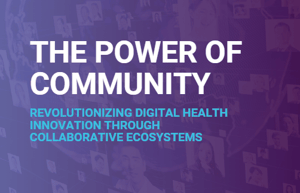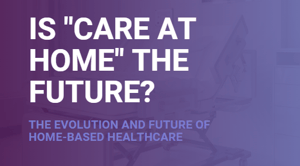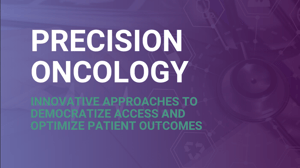.png?width=300&name=Insights%20Hero%20(1).png)
INSIGHTS
-
All
-
Blog
-
White Papers
-
Case Studies

Decimal.health today announced the appointment of Diana Gelston as President and Managing Partner, a key milestone in the company’s evolution. Diana joins Decimal at a pivotal moment as the firm expands its impact across three powerful growth engines: Decimal Health, its strategy consulting and commercialization business; Ecosystem Development, like CancerX - the national collaborative advancing innovation in oncology; and AccelerOnc Studio, the venture focused on building, scaling, and investing in breakthrough oncology innovation.
Read More
The digital health market has exploded over the last few years. Billions have been invested in solutions for remote patient monitoring, chronic care management, and patient engagement. Health systems know digital transformation is critical for value-based care and patient experience. Yet adoption remains slow and frustratingly complex, with long sales cycles, integration complexity, and scattered digital ecosystems creating significant barriers.
Read More
Explore how innovation communities leverage network effects to create exponential value, examine the structural elements that make them effective, and provide strategic guidance for organizations seeking to maximize their impact in this collaborative landscape.
Read More
Artificial intelligence continues to transform healthcare at an unprecedented pace, reshaping everything from clinical decision-making to administrative workflows. While past discussions highlighted AI's potential, today's healthcare landscape showcases tangible implementations that are delivering real results across the healthcare ecosystem.
Read More
A comprehensive guide to navigating the complexities of EHR integration and data security. By understanding these essential elements, startups can enhance their market fit, align with provider needs, and ensure compliance with U.S. regulations.
Read More
For international digital health companies eyeing the US market, understanding healthcare data security isn't just about compliance—it's about building trust and credibility in a market where patient privacy is paramount. As healthcare becomes increasingly digitized, the protection of sensitive patient information has moved to the forefront of both regulatory requirements and healthcare provider concerns.
Read More
In this Partner Perspective, by Sarah Boone, the significant gap between clinical trial results and real-world treatment outcomes is examined, with a focus on how digital retention strategies can transform patient adherence challenges into competitive advantages for pharmaceutical sales teams.
Read More
Examine the resurgence of Care at Home (CaH) in the healthcare industry, a practice that was common in the 1930s but later became obsolete due to scalability and reimbursement challenges.
Read More
Remote Patient Monitoring (RPM) continues to transform healthcare delivery, creating new opportunities for providers and improved outcomes for patients. And no, DTx is not dead.
Read More
Digital health is becoming more mainstream within health systems, especially in light of ongoing challenges like workforce shortages. However, the adoption, implementation, and scale achieved by these technologies across use cases and types of health systems remain inconsistent.
Read More
One of the most compelling advantages of Care at Home (CaH) models is their patient-centered nature. As healthcare becomes increasingly consumer-driven, understanding the patient perspective on home-based care becomes crucial for organizations looking to remain competitive and deliver exceptional experiences.
Read More
While Care at Home (CaH) models offer tremendous potential benefits, healthcare organizations must navigate several significant challenges to build successful, sustainable programs. Understanding these hurdles and developing strategic approaches to address them is essential for organizations looking to implement or expand their home-based care offerings.
Read More
The concept of delivering healthcare in patients' homes is not new. In fact, in the 1930s, approximately 40% of healthcare services were delivered in patients' homes. However, this practice declined significantly as hospital-based care became the standard model, primarily due to limitations in scalability and inadequate reimbursement structures.

In this Partner Perspective, by Sarah Boone, the paradox of clinical trial participation is examined—where only 7.1% of cancer patients join trials despite increasing trial complexity—and how digital innovations can transform research from site-centric to patient-centric models, accelerating enrollment while improving diversity and market relevance.
Read More
Healthcare organizations investing in innovation communities frequently encounter a deceptively straightforward question: "What's the ROI?" The reality, however, extends far beyond conventional return calculations. Collaborative innovation creates multifaceted value that develops across various timeframes, from immediate efficiency improvements to long-term transformation of healthcare delivery and outcomes.
Read More
The United States remains an attractive market for European digital health companies looking to expand their global footprint. The global digital health market was estimated at USD 288.55 billion in 2024 and is projected to grow at a CAGR of 22.2% from 2025 to 2030, reaching USD 946.04 billion by 2030.
Read More
Healthcare systems across the country are increasingly adopting Care at Home (CaH) models as a strategic response to evolving patient preferences, workforce challenges, and economic pressures. This shift represents more than just an alternative care setting—it's becoming an essential component of the modern healthcare delivery ecosystem.

Understanding Electronic Health Record (EHR) integration is a fundamental business decision for digital health startups eyeing the US healthcare market, not just another technical checkbox. As international innovators look to enter the world’s largest healthcare market, understanding EHR integration is a must.
Read More
The conventional "build or buy" approach that has dominated healthcare innovation thinking for decades is quickly becoming outdated. Across the interconnected digital health ecosystem, forward-looking organizations are embracing more sophisticated strategies for innovation community engagement that blend proprietary development, strategic partnerships, and collaborative participation.

Healthcare innovation is undergoing a dramatic transformation with the rise of collaborative communities that are changing how digital health solutions are developed and implemented. These innovation ecosystems are proving their value by generating breakthrough solutions at unprecedented speeds. But what makes these communities so powerful?
Read More
This white paper explores how digital transformation is revolutionizing cancer care across six critical domains: early detection through risk stratification, clinical trial acceleration, democratization of precision oncology, provider engagement, patient support beyond clinical settings, and treatment optimization.
Read More
In this Partner Perspective, by Sarah Boone, the crisis of oncologist burnout—rising from 45% to 59% over the past decade—is addressed through a strategic shift from traditional medical affairs engagement to digital solutions that actively reduce administrative burden and give clinicians back their most precious resource: time.
Read More
Early detection can mean the difference between life and death in cancer treatment. The survival statistics tell a compelling story: Stage I colorectal cancer offers a 92% five-year survival rate, while Stage IV plummets to just 15.6%. Similar patterns exist across most cancer types, creating both a moral imperative and economic necessity to move diagnosis earlier in disease progression.
Read More
Early detection can mean the difference between life and death in cancer treatment. The survival statistics tell a compelling story: Stage I colorectal cancer offers a 92% five-year survival rate, while Stage IV plummets to just 15.6%. Similar patterns exist across most cancer types, creating both a moral imperative and economic necessity to move diagnosis earlier in disease progression.
Read More
When we think about cancer care, we often focus on what happens in hospitals and clinics. But there's a fundamental reality that's frequently overlooked – patients spend remarkably little time in clinical settings while managing their condition around the clock.
Read More
A multinational pharmaceutical partnered with Decimal.health to develop a US market-entry strategy for the launch of a digital therapeutic.
Read More
A technology healthcare company approached Decimal.health to find a strong product-market fit and monetization model for their product to gain traction in the market.
Read More
An esteemed cancer center joined forces with Decimal.health to revamp its Digital Innovation department, addressing role and responsibility ambiguities while distinctly driving adjacent and transformative innovation to secure the center's continued excellence.
Read More
In this Partner Perspective, by Sarah Boone, the limitations of traditional cancer support models are examined, exploring how digital innovation can bridge the gap between episodic clinic visits and the continuous 24/7 reality of cancer management that patients face at home.
Read More
A distinguished health system partnered with Decimal Health to revamp its Collaborative Care model (CoCM) to overcome capacity constraints, increase patient enrollment and drive profitability by partnering with an E2E CoCM vendor.
Read More
A prominent US health system partnered with Decimal.health to identify operational improvements for closing gaps in care to optimize patient care.
Read More
A large multinational software technology partnered with Decimal.health to develop a commercialization plan and positioning for their innovative software solution.
Read More
A multinational biopharmaceutical company partnered with Decimal.health to explore various engagement models for their collaboration with a digital mental health company to complement the impact of their biologic treatment in multiple dermatological conditions.
Read More
In this Partner Perspective, by Sarah Boone, the significant gap between precision oncology innovation and implementation is explored, examining how advanced targeted therapies remain concentrated in academic centers while digital ecosystems and virtual consultation networks can democratize access to cutting-edge treatments for patients in community settings.
Read More
A novel digital health company partnered with Decimal.health to identify a use for their Parkinson's watch in the U.S. market and develop a plan for increased customer reach and acquisition.
Read More
A digital health technology startup with multiple digital therapeutics in its portfolio partnered with Decimal.health to identify which of their solutions had most promise on the US market, and which levers they could apply to accelerate market access.
Read More
A prominent physical therapy practice, offering both at-home and virtual services, has collaborated with Decimal.health to identify and explore partnership opportunities aimed at enhancing their commercial progress for their upcoming funding round.
Read More
In this Partner Perspective, by Sarah Boone, the dramatic difference in cancer survival rates between early and late-stage detection is explored as both a clinical imperative and commercial opportunity, examining how digital risk stratification is transforming the traditional patient journey from diagnosis-driven to prevention-focused market strategies.
Read More.png?width=125&height=125&name=logo_wt%20(3).png)






.png?width=300&name=CancerX%20Decimal%20Banner%20(2).png)